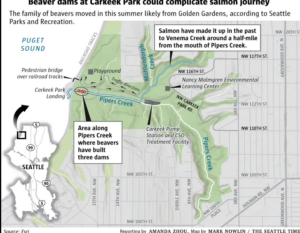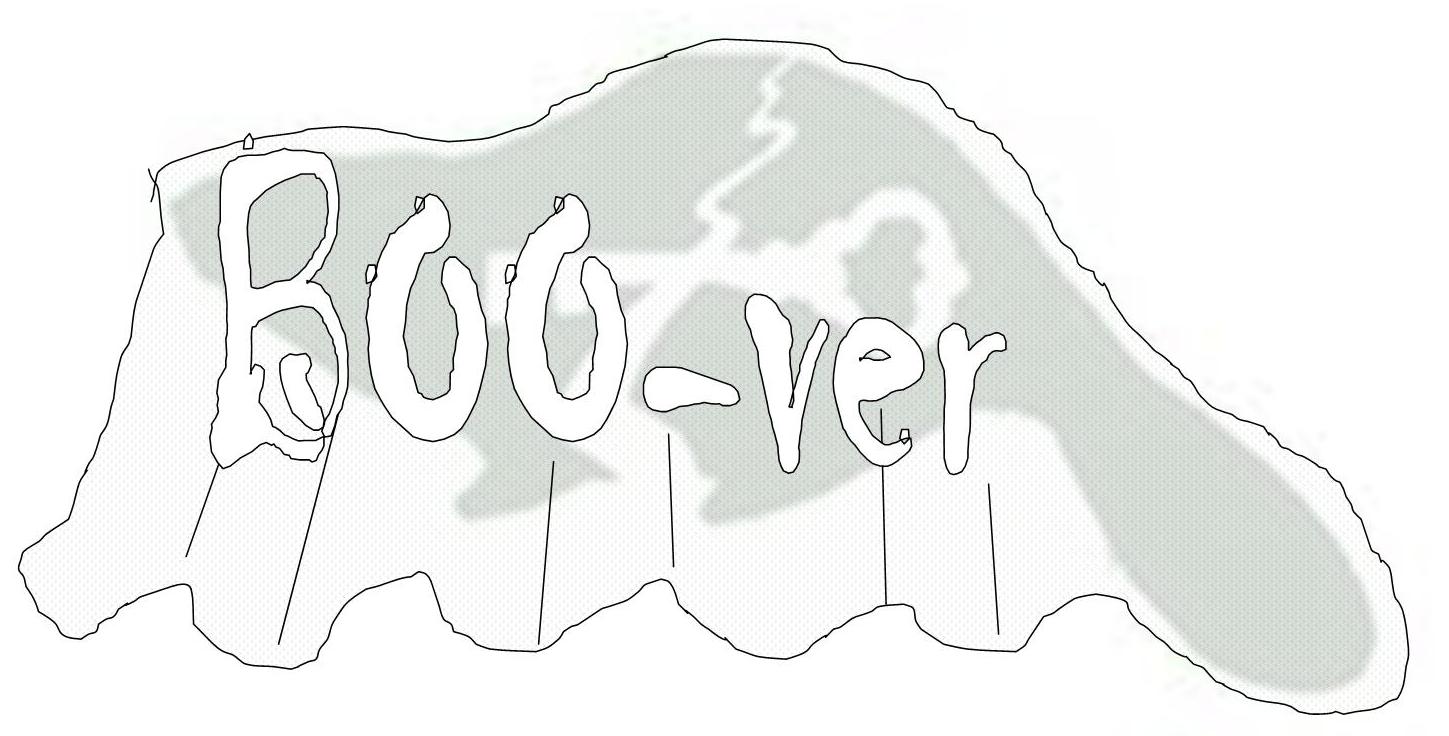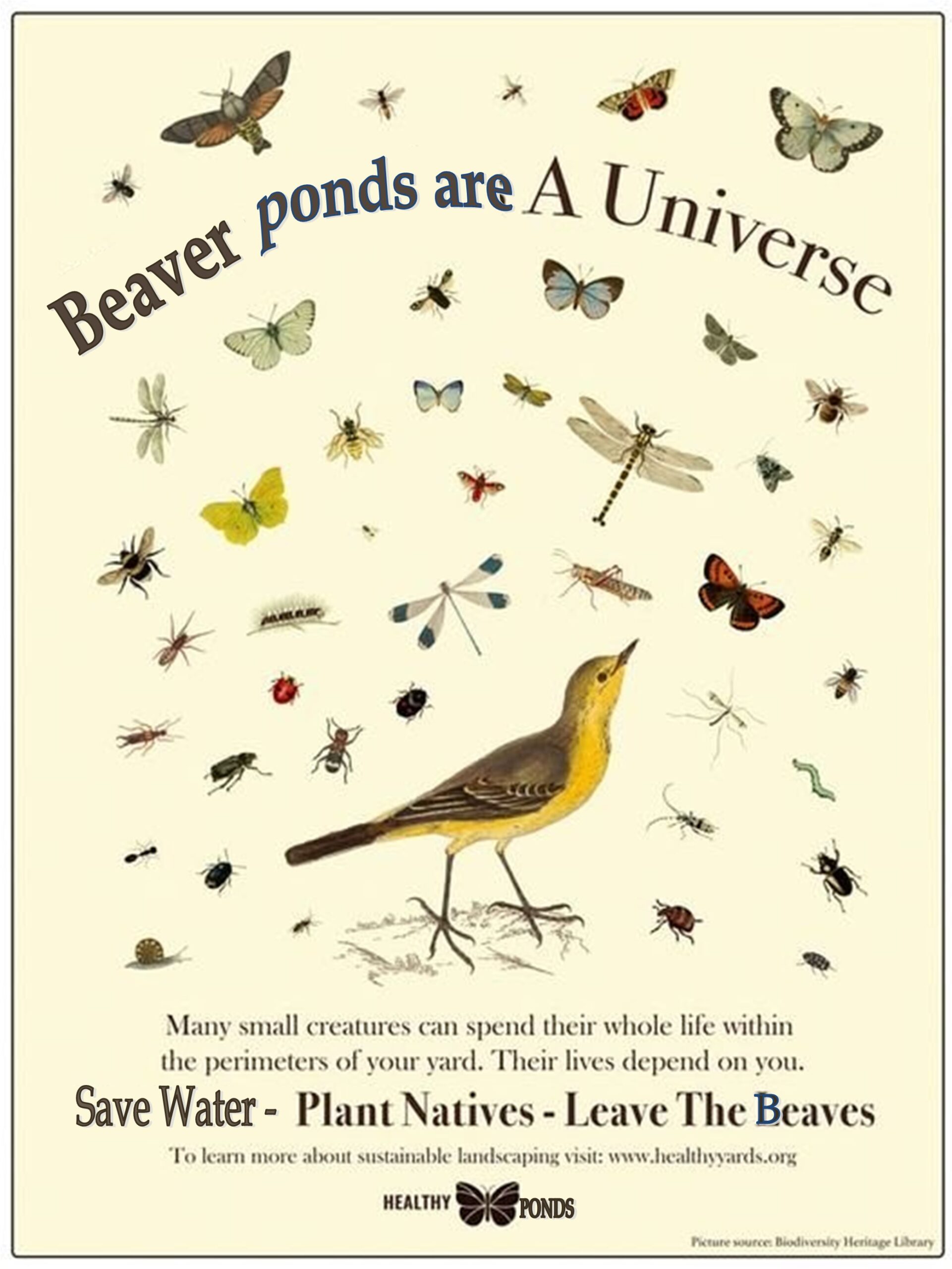Do you remember that one kid in elementary school who did everything perfectly? Got straight A’s. raised their hand everytime with the right answer, had amazing homemade costumes every halloween, colored in the lines and always had the best toys with no broken parts and new batteries, the most friends and they newest clothes? Maybe your parent even said “why can’t you be more like that?” and you wondered y0urself more than once.
And then do you remember how it felt when everyone went to fifth grade camp and they fell in that puddle that soaked them in mud from head to toe and they had to go home early because they couldn’t stop crying? Well that’s how I felt when I saw this article.
Oh how the mighty have fallen.
Beaver family that moved into Seattle’s Carkeek Park may complicate salmon-spawning journey
Called by the sound of flowing water and ample trees, a family of beavers have moved into Carkeek Park, building a series of dams along the mouth of Pipers Creek.
The largest dam — which incorporates a fixed park bench and two large trees — has widened and grown to the degree that water is spilling on to a walking trail nearby. The dam, reinforced with mud and branches, also may present a challenge for chum salmon, which are set to return and spawn at any moment, said David Koon, the salmon program director at the Carkeek Watershed Community Action Project.
It’s not clear yet how the beaver dam will impact the spawn, he said, and some of that will depend on how much and when it will rain this season. Beavers build dams to create a pond where they can build a “lodge” to provide protection from predators.
Mind you. This is SEATTLE. Where NOAA fisheries is head quartered. Where Michael Pollock works. This is the smartest state about beavers in the entire universe. And he is worried about the chum.
In a natural environment — where a river flows consistently all the time — a beaver dam would be no problem for spawning salmon, he said. But Pipers Creek, surrounded by a highly urbanized and concrete-laden watershed, is no natural river.
Even without beavers, the survival rates of the salmon’s eggs are low at Carkeek Park, he said. Due to the nonporous nature of the watershed, the stream’s depth often increases and decreases rapidly before and after rain, leading the eggs often to be washed out. Plenty of other things like runoff from fertilizers, tire dust and dog poop also threaten the eggs.
While beaver dams can sometimes help salmon eggs, slowing down water and filtering silt, the ones in Carkeek Park may prevent the salmon from traveling fully upstream. If the downstream waters are high enough — which they aren’t right now — Chinook and coho salmon can jump over the dams and the chum can beat their way through the gaps, Koon said. Otherwise, the salmon will have to wait for when the water levels get high enough during active rain.
You see what I mean about knowing better. The idea is they know beaver help salmon. Just maybe not these salmon. Never mind that the creek probably wouldn’t have deep water at all if the beavers weren’t there. Never mind that it is perfectly normal for salmon to wait for storms and swim over during high rain. Never mind that waiting might even connect the, to more salmon so they can find a mate. in the first place.
 Parks and Recreation intends to apply for a permit to install a device within the dam that would drop the water level, and may also implement fencing to protect trees. The beavers, which likely came over from Golden Gardens, may be relocated, she said.
Parks and Recreation intends to apply for a permit to install a device within the dam that would drop the water level, and may also implement fencing to protect trees. The beavers, which likely came over from Golden Gardens, may be relocated, she said.
Standing next to a 2-by-6-inch plank built into the largest dam, Koon estimated the dam’s length is more than 50 feet and the depth of the pooled water is at least 5 feet. Koon, who has kept an eye on the salmon at Carkeek Park for years, said he’s seen small dams at Pipers Creek likely built by young inexperienced beavers that get washed out after one big rain in the past.
“These ones are clearly experienced,” he said. “They’ve done some really good, amazing engineering.”
That’s right the novice beavers aren’t a problem for salmon because they only build little dams and those get washed out. But these experienced beavers build 5 feet dams and that ruins everything.
Hey you know how tall the Martinez primary dam was when the city first measured it? 7 feet! And do you know what that concrete channel did to the steelhead population? NOTHING. In fact at one time our beavers had five dams. And some were big and some were little and it had nothing at all to do with their experience level.
This year, as the stream has moved and broken through some of the smaller dams, he’s seen the beavers expand and lengthen the large dam, patching up sections overnight. Koon said the two adult beavers and a “kit” or baby beaver have had additional baby beavers since moving into Carkeek.
Oh noo. You mean you have those very rare REPAIRING beavers that teach their children how to help fix and strengthen dams over time? That almost never always happens.
I have a few videos that might interest you.
See how this works? You have no need to fear the boover. Happy Halloween by the way.










































